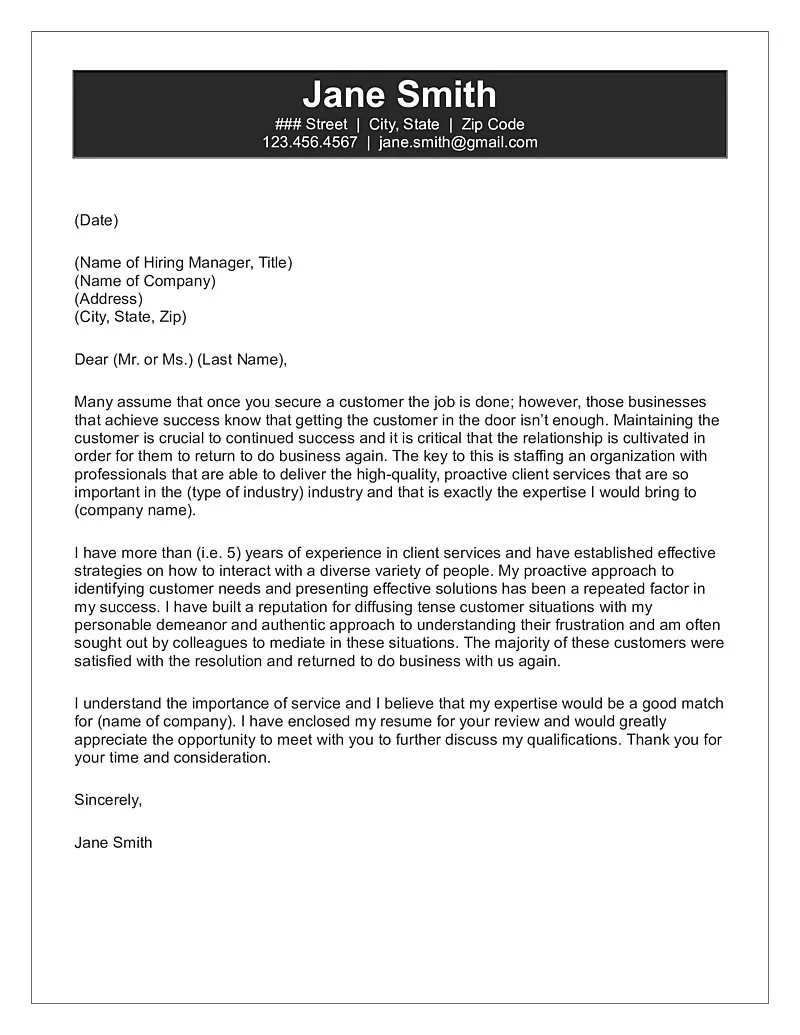Understanding the Customer Service Role
The customer service role is pivotal in shaping a company’s reputation and success. Customer service professionals are the primary point of contact for customers, acting as the face and voice of the organization. They are responsible for addressing inquiries, resolving issues, and providing support to ensure customer satisfaction. This role extends beyond simply answering questions; it encompasses building relationships, understanding customer needs, and advocating for solutions that enhance the overall customer experience. Successful customer service representatives are adept at communication, possess strong problem-solving skills, and are able to maintain a positive attitude even in challenging situations.
Key Responsibilities of Customer Service Professionals
Key responsibilities in customer service are diverse and demand a broad skillset. Primarily, representatives respond to customer inquiries via various channels such as phone, email, and chat. They are expected to accurately and efficiently resolve issues, which often involves diagnosing problems, offering solutions, and providing step-by-step guidance. Another key responsibility is actively listening to customer concerns and providing empathy. This allows for a deeper understanding of the customer’s needs, which, in turn, facilitates effective problem-solving. Moreover, customer service professionals often handle complaints and escalate complex issues to the appropriate departments. They also play a crucial role in collecting customer feedback and providing valuable insights to improve products, services, and processes.
Essential Skills for Customer Service Success
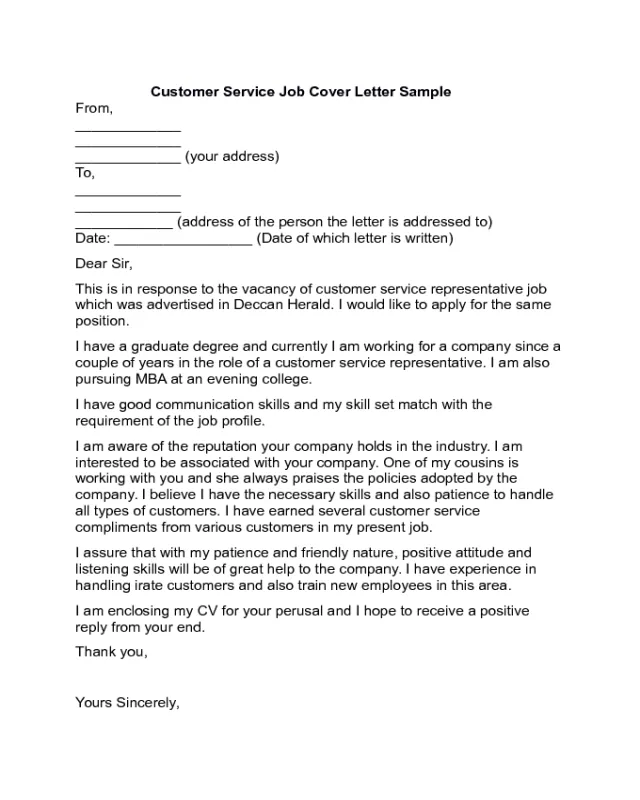
Several essential skills define success in the customer service field. Excellent communication, both written and verbal, is fundamental. The ability to convey information clearly, concisely, and professionally is crucial for effective interaction. Problem-solving is another vital skill; representatives must think critically to identify root causes, evaluate options, and propose solutions. Empathy is essential for building rapport and understanding customer needs. Representatives should be able to see things from the customer’s perspective and respond accordingly. Patience and resilience are also critical, as customer service often involves dealing with difficult situations and demanding individuals. Finally, technical proficiency in using customer relationship management (CRM) software and other relevant tools is increasingly important.
Crafting a Compelling Cover Letter
A compelling cover letter can significantly improve your chances of landing a customer service job. It is your opportunity to showcase your skills, experience, and enthusiasm. A well-written cover letter complements your resume and offers a platform to tell your story, highlighting why you are the best fit for the role. This document should not only reiterate your qualifications but also demonstrate your personality, your understanding of the company, and your genuine interest in the position. It is the key to making a memorable first impression and setting yourself apart from other candidates. Taking the time to craft a thoughtful and targeted cover letter is an investment that can yield substantial returns in your job search.
Header and Contact Information
Begin your cover letter with a professional header that includes your full name, address, phone number, and email address. Make sure this information is accurate and up-to-date. The header should be clearly formatted and easy to read. Following this, include the date and the hiring manager’s name (if known), their title, and the company’s address. This level of detail demonstrates that you are attentive and have taken the time to personalize your application. By ensuring that your contact details are prominently displayed, you make it easy for potential employers to reach you. A well-structured header sets a professional tone and immediately conveys your attention to detail.
Personalized Salutation
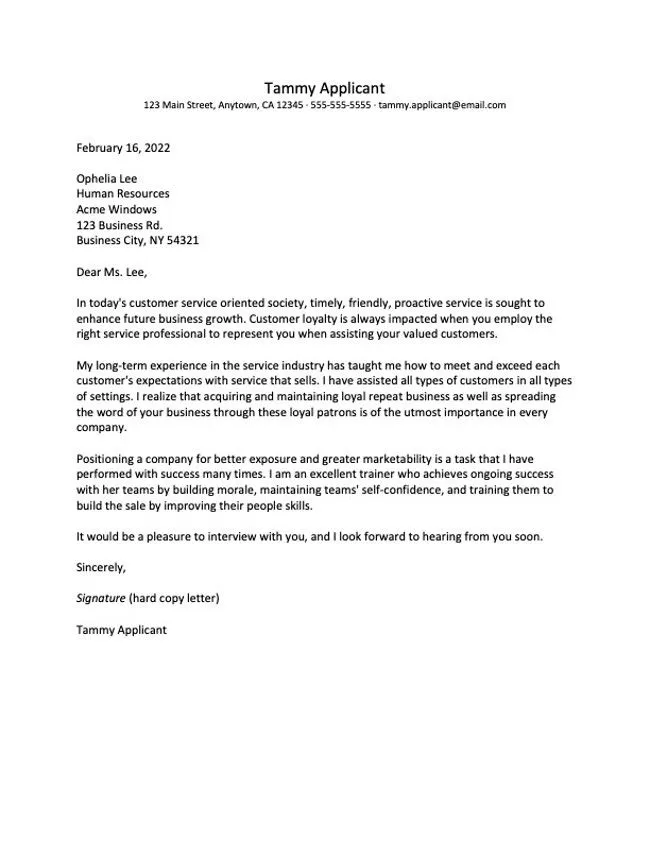
Always address the hiring manager by name if possible. This shows that you have done your research and are not simply sending out a generic application. If you cannot find the hiring manager’s name, use a professional salutation, such as “Dear Hiring Manager,” “Dear [Department Name] Team,” or “Dear [Company Name] Recruitment Team”. Avoid generic greetings like “To Whom It May Concern,” as they can make your letter seem impersonal. When you personalize your salutation, you immediately grab the reader’s attention and demonstrate your genuine interest in the role. This personal touch can significantly increase the impact of your cover letter.
The Opening Paragraph Grabbing Attention
Your opening paragraph is your first opportunity to make a strong impression. Start with a concise and engaging sentence that immediately captures the reader’s attention. Clearly state the position you are applying for and where you saw the job posting. Then, briefly highlight your key skills and qualifications. The opening paragraph should create a sense of excitement and demonstrate why you are the ideal candidate. Avoid generic statements; instead, make it unique to reflect your personality and connect with the reader. This initial paragraph sets the tone for the rest of the letter and encourages the hiring manager to continue reading. Make sure that the first sentence summarizes your value.
Highlighting Relevant Skills and Experience
In the main body of your cover letter, emphasize the skills and experiences most relevant to the customer service job. Focus on the requirements listed in the job description and provide specific examples of how you have demonstrated these skills in the past. Showcasing your ability to handle customer inquiries, resolve issues, and maintain a positive attitude is crucial. Tailor your letter to each specific job by highlighting the skills that the company values. Use action verbs to describe your accomplishments, such as “managed,” “resolved,” “assisted,” and “implemented.” Providing concrete examples helps the hiring manager visualize your capabilities and understand your potential contributions to the company.
Quantifying Achievements with Numbers
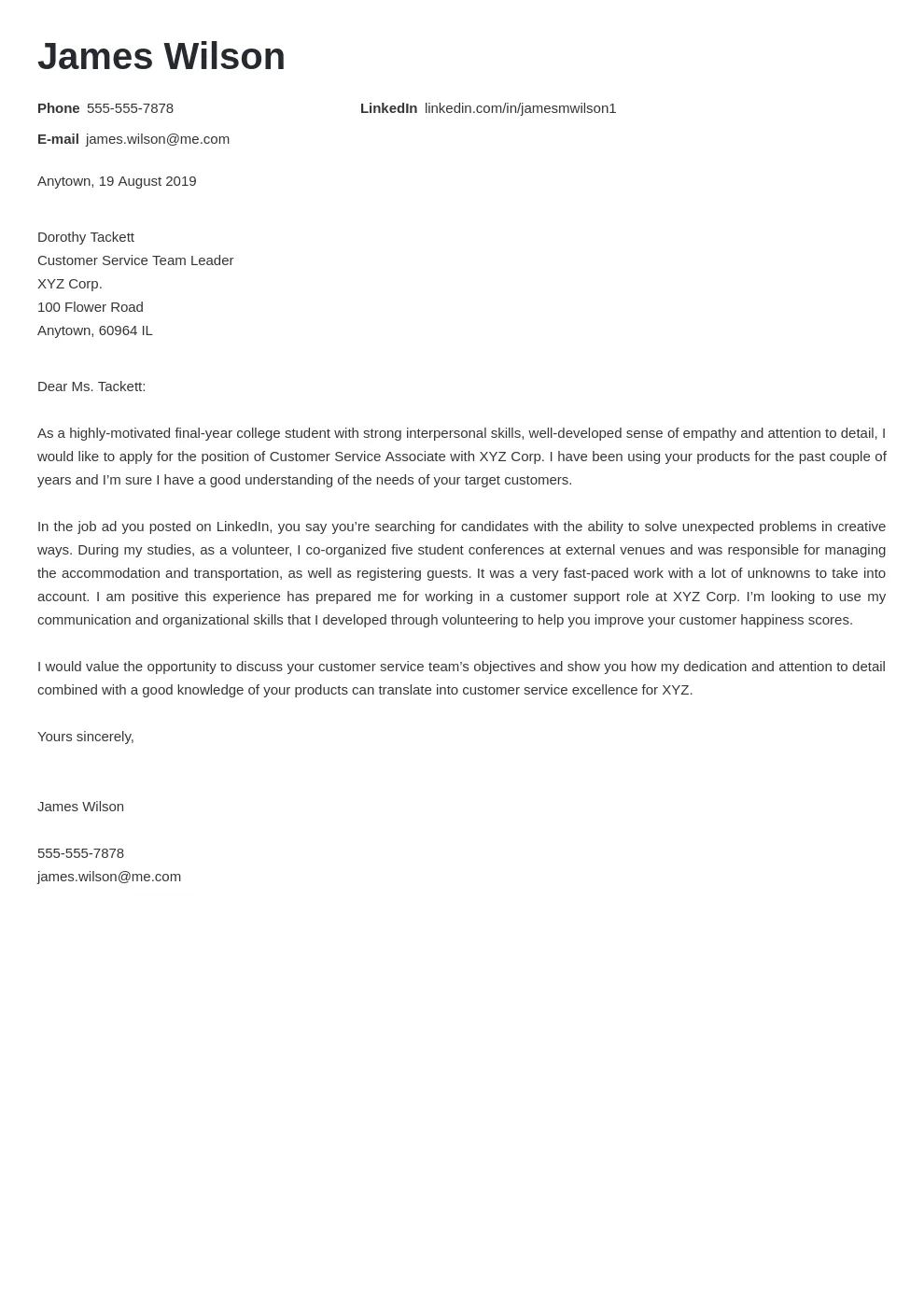
Whenever possible, quantify your achievements with numbers. Use metrics to illustrate the impact of your work. For instance, state the percentage increase in customer satisfaction scores or the number of customer inquiries you handled per day. Quantifying your accomplishments adds credibility to your claims and demonstrates the tangible results you have achieved. This objective evidence will help the hiring manager understand your capabilities and the value you can bring to the role. Instead of just saying you improved customer satisfaction, specify by how much. This makes your achievements more memorable and impactful.
Tailoring to the Job Description
Always tailor your cover letter to each specific job application. Review the job description carefully and identify the key skills and qualifications the employer seeks. Use the language and keywords from the job description to demonstrate that you understand the role’s requirements. Customize your letter by emphasizing the experiences and skills that align with the employer’s needs. This targeted approach shows that you are not just sending out a generic application but have taken the time to understand the specific needs of the company. Tailoring your letter increases the likelihood that the hiring manager will see you as a strong fit for the position.
Expressing Enthusiasm and Company Research
Demonstrate your enthusiasm for the company and the role. Show that you have researched the company by mentioning its mission, values, or recent achievements. Explain why you are interested in working for this particular organization and how your values align with theirs. Expressing genuine enthusiasm can make a significant impression on the hiring manager. This shows that you have taken the time to understand the company and are genuinely excited about the opportunity. Referencing specific company initiatives or projects demonstrates your commitment to the role and shows you are not simply looking for any job but are specifically interested in this one.
Professional Closing and Call to Action
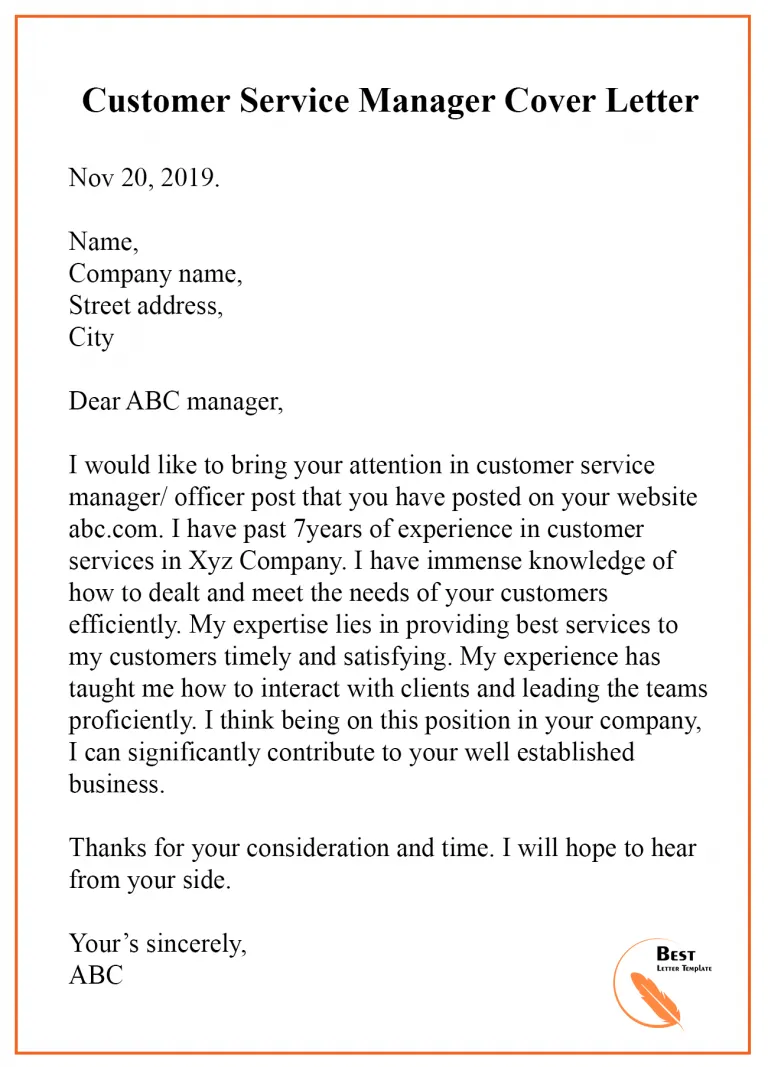
Close your cover letter with a professional statement and a clear call to action. Thank the hiring manager for their time and consideration. Reiterate your interest in the position and express your eagerness to discuss your qualifications further. Include a call to action, such as “I look forward to hearing from you soon” or “I am available for an interview at your earliest convenience.” Include your phone number and email address again. Maintain a positive and professional tone throughout the closing paragraph. This is a way to reinforce your interest and makes it easy for the hiring manager to follow up with you.
Cover Letter Examples
Here are some examples of cover letters that you can use as inspiration.
Example Cover Letter 1 for Entry-Level Positions
Dear [Hiring Manager Name],
I am writing to express my enthusiastic interest in the Customer Service Representative position at [Company Name], as advertised on [Platform]. With my strong communication skills and passion for helping others, I am confident I can excel in this role.
During my time at [Previous Experience], I developed excellent communication and active listening abilities. I am proficient in [Relevant Skills]. I am eager to learn and committed to providing exceptional customer service.
I am impressed by [Company Name]’s commitment to [Company Value]. I am excited about the opportunity to contribute to your team and help customers.
Thank you for your time and consideration. I look forward to hearing from you soon.
Sincerely, [Your Name]
Example Cover Letter 2 for Experienced Professionals
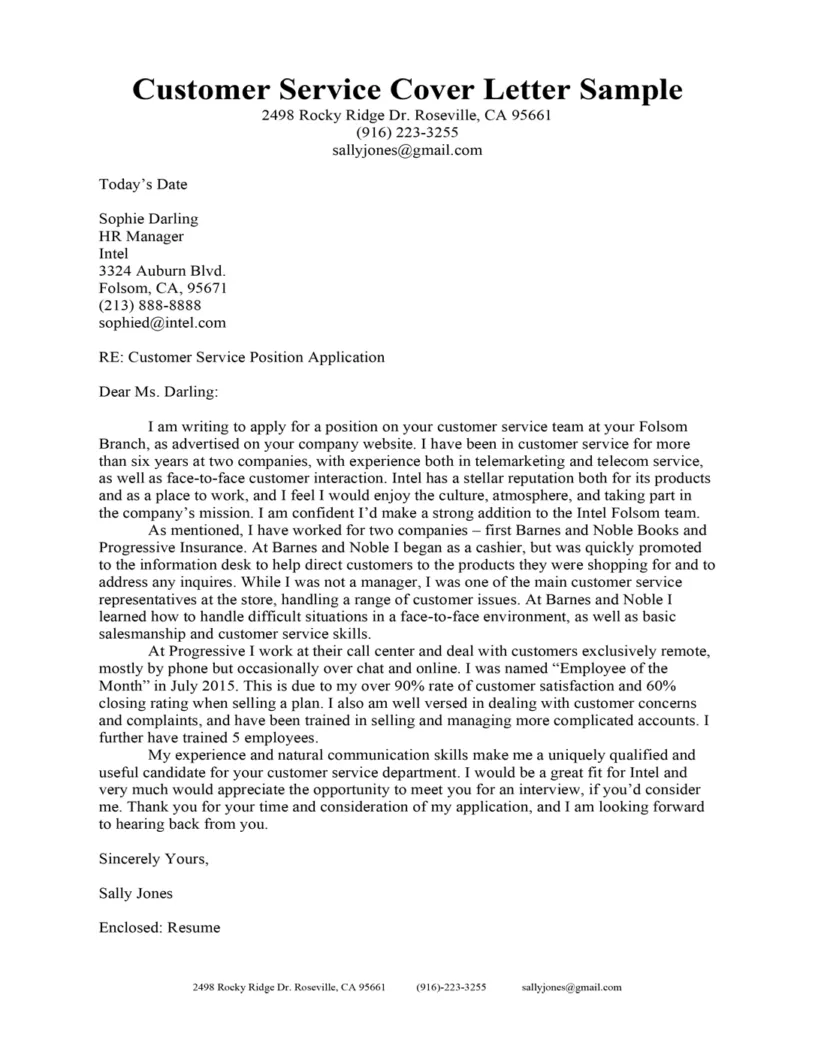
Dear [Hiring Manager Name],
I am writing to apply for the Customer Service Manager position at [Company Name]. With over [Number] years of experience in customer service management, I am confident I possess the skills and expertise to lead your team to success.
Throughout my career at [Previous Company], I have consistently exceeded expectations, improving customer satisfaction scores by [Percentage]. I have a proven track record of developing and implementing effective customer service strategies. I am experienced in training and mentoring customer service teams and have a solid understanding of CRM software and other related tools.
I am particularly drawn to [Company Name]’s reputation for [Company Attribute]. I am enthusiastic about the opportunity to leverage my skills to drive customer satisfaction and retention at your company.
Thank you for your time and consideration. I look forward to discussing my qualifications in an interview.
Sincerely, [Your Name]
Example Cover Letter 3 for a Specific Industry
Dear [Hiring Manager Name],
I am writing to apply for the Customer Service Representative position at [Company Name], specializing in the [Industry] field, as advertised on [Platform]. My background in the [Industry] field, combined with my customer service experience, makes me an ideal candidate for this role.
In my previous role at [Previous Company], I supported customers with complex [Industry-related] inquiries, consistently exceeding expectations by providing timely and accurate resolutions. I am proficient in [Industry-specific Skills], and I am eager to leverage these skills to provide exceptional customer service at [Company Name].
I am excited by [Company Name]’s commitment to [Specific Project or Value]. I am confident that my experience and dedication will contribute to your team’s success.
Thank you for your consideration. I look forward to hearing from you soon.
Sincerely, [Your Name]
Proofreading and Formatting
Proofreading and formatting are critical steps in ensuring your cover letter makes a positive impression. A polished and well-formatted cover letter demonstrates your attention to detail, professionalism, and commitment to quality. These are essential attributes for a customer service professional, as they reflect your ability to communicate effectively and accurately. Taking the time to proofread and format your cover letter correctly can significantly increase your chances of landing an interview.
Checking for Grammatical Errors and Typos
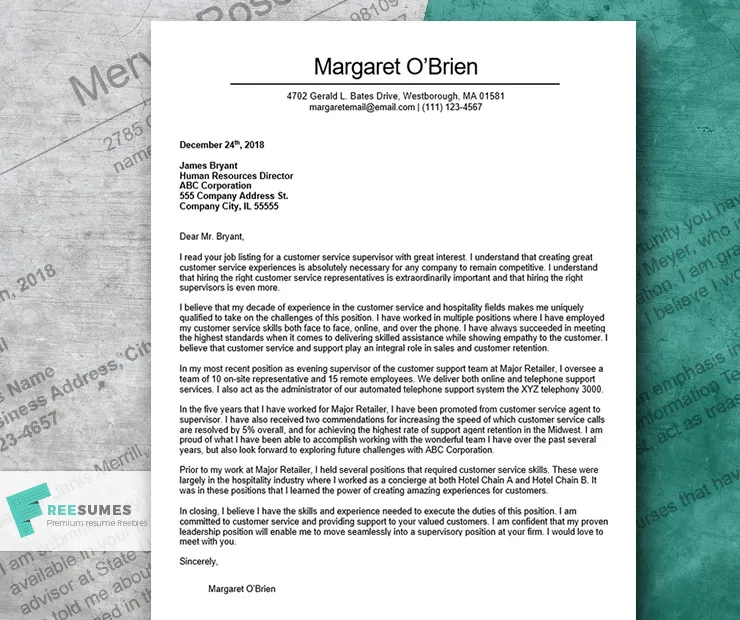
Carefully proofread your cover letter for any grammatical errors and typos. Errors can undermine your credibility and create a negative impression on the hiring manager. Use spell-check and grammar-check tools, but don’t rely on them entirely. Read your cover letter multiple times, and consider reading it aloud to catch any awkward phrasing. It’s also a good idea to ask a friend, family member, or career counselor to review your cover letter. A fresh pair of eyes can often spot errors you might have missed. Eliminate all inconsistencies and check for punctuation errors as well.
Ensuring a Clean and Readable Format
Ensure your cover letter has a clean and readable format. Use a professional font such as Times New Roman, Arial, or Calibri, and maintain a consistent font size (typically 11 or 12 points). Use standard margins (1 inch on all sides) and double-space between paragraphs. This format makes your letter easy to read and shows your commitment to professionalism. Use clear headings and bullet points to break up large blocks of text and make it easier for the hiring manager to scan the document. Keep the layout uncluttered and the content well-organized. A visually appealing cover letter is more likely to be read and appreciated.
Submitting Your Cover Letter
Proper submission of your cover letter is essential for ensuring your application is received correctly. Always follow the specific instructions provided in the job posting. Pay close attention to the required file format, naming conventions, and submission methods. Following these instructions carefully demonstrates your attention to detail and your respect for the hiring company’s processes. If the job posting indicates a specific way to submit your cover letter, be sure to adhere to it. This will help ensure that your application is not overlooked.
File Format and Naming Conventions
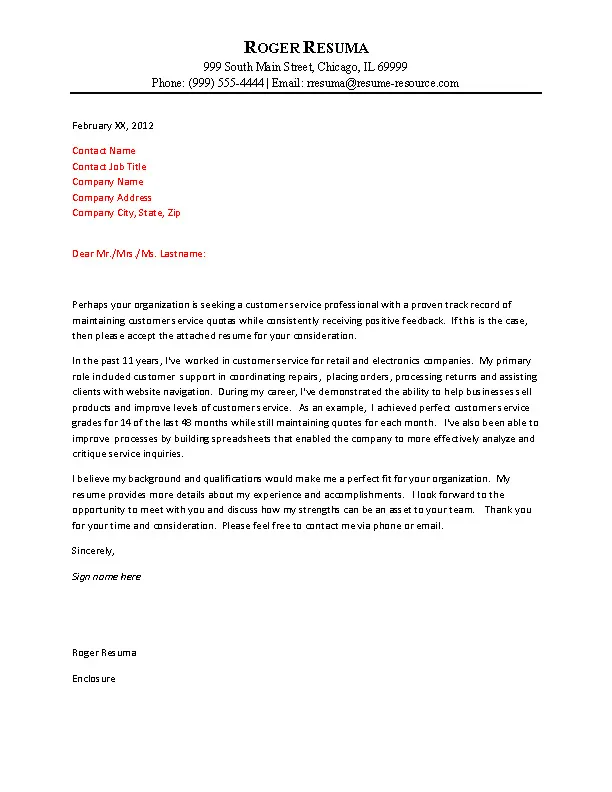
Submit your cover letter in the correct file format. Common formats include PDF and Word documents. PDF is generally preferred as it preserves the formatting, ensuring your letter looks the same regardless of the recipient’s software. If the job posting requests a specific format, be sure to use it. Also, use a clear and professional file name, such as “YourName_CoverLetter_CompanyName.” Avoid generic file names, as they can make it difficult for the hiring manager to identify your application. The file name should reflect the document’s content and your name. This will ensure easy organization. This helps recruiters to find your application easily.
Following Application Instructions
Carefully review and adhere to all application instructions provided in the job posting. Some postings may require you to submit your cover letter through a specific online portal, while others may ask you to email it to a particular address. Not following these instructions may result in your application being overlooked. Double-check that you have included all required documents and provided the correct information. Proofread all your submission details, including your contact information. This shows that you can follow instructions and are dedicated to the application process. Make sure all the elements match what is requested by the employer.
In conclusion, crafting a compelling cover letter is crucial for securing a customer service job. By understanding the role, highlighting your skills, tailoring the letter, and ensuring a professional presentation, you significantly increase your chances of success. Remember to always proofread and follow the submission instructions. Good luck in your job search!
